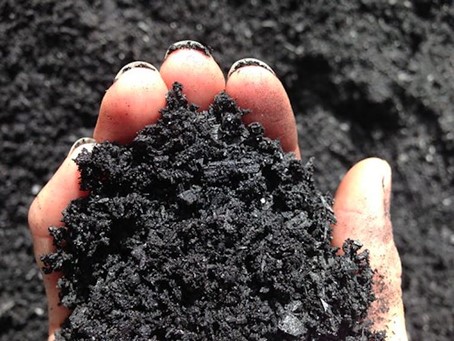Our cities need to be more permeable: how biochar can be a sustainable solution to flooding
A recent article by Lydia Fryda and Abdoulaye Kane, researchers at UniLaSalle, looks at tackling the pressing issue of urban flooding through the innovative use of biochar.
Published on 8 January 2024, the article explores how biochar, a porous, carbon-rich material made from organic waste, can provide sustainable solutions to mitigate urban flooding.

Saint Rémy-lès-Chevreuse. Lionel Allorge,
CC BY-NC-SA
Key findings:
The authors point to the increasing frequency and intensity of flooding in European cities, due in part to climate change and urbanisation.
Conventional stormwater management systems, based on impervious surfaces and outdated drainage systems, are proving inadequate in the face of increasing rainfall and urbanisation.
A paradigm shift towards managing rainwater at source by promoting permeable surfaces and natural infiltration is gaining momentum across Europe.
Biochar is proving to be a promising ally in this endeavour, offering numerous benefits such as water retention, soil improvement and pollutant filtration.
Thanks to its porous structure and resistance to biodegradation, biochar can effectively clean rainwater and improve soil permeability, reducing the risk of flooding and pollution.
Examples from cities such as Stockholm, Minneapolis and Helsinki show the successful integration of biochar into urban stormwater management strategies, resulting in improved water quality and ecological resilience.
In France, despite growing interest from municipalities such as Pantin, Franconville and Le Hommet-d'Arthenay, challenges such as lack of standardisation and policy frameworks are hindering the widespread adoption of biochar.
Collaboration between public administrations, scientists, the private sector and stormwater management associations is crucial to overcome these challenges and promote the sustainable use of biochar in urban areas.
The article highlights the importance of initiatives such as the Interreg NWE CASCADE project, which aims to facilitate knowledge exchange and implement sustainable carbon management solutions, including biochar-based strategies, across Northwest Europe.
Conclusion:
Biochar is emerging as a promising solution to the complex challenges of urban flooding, offering a sustainable way to improve water management and urban resilience. By encouraging collaboration and innovation, we can harness the potential of biochar to create greener and more resilient urban landscapes for generations to come.
Acknowledgements:
The authors would like to thank Jean-Jacques Hérin for his invaluable contributions to this article, which greatly enriched its content and insights.
Stay tuned for further updates and insights on sustainable urban development and environmental responsibility.
Here you can find the article

